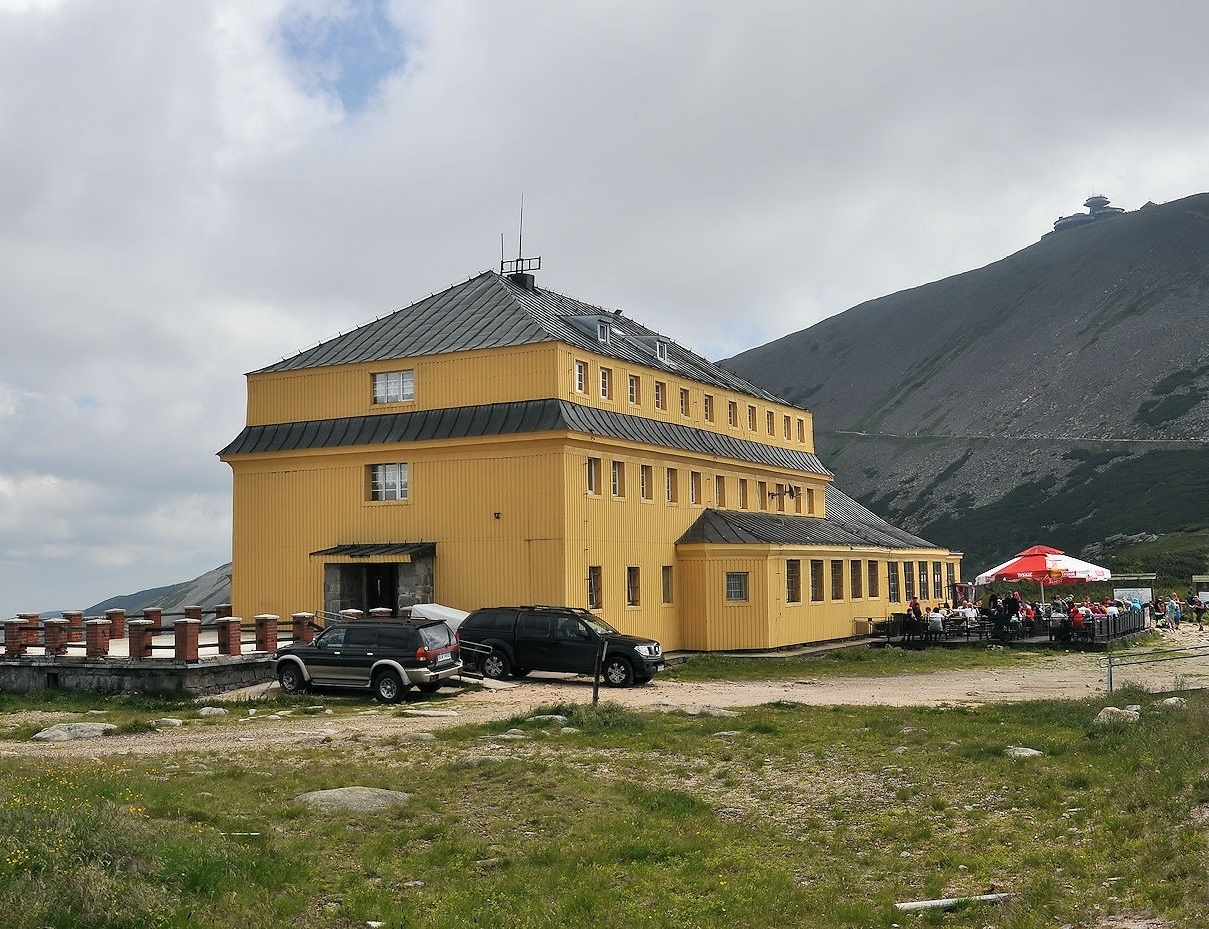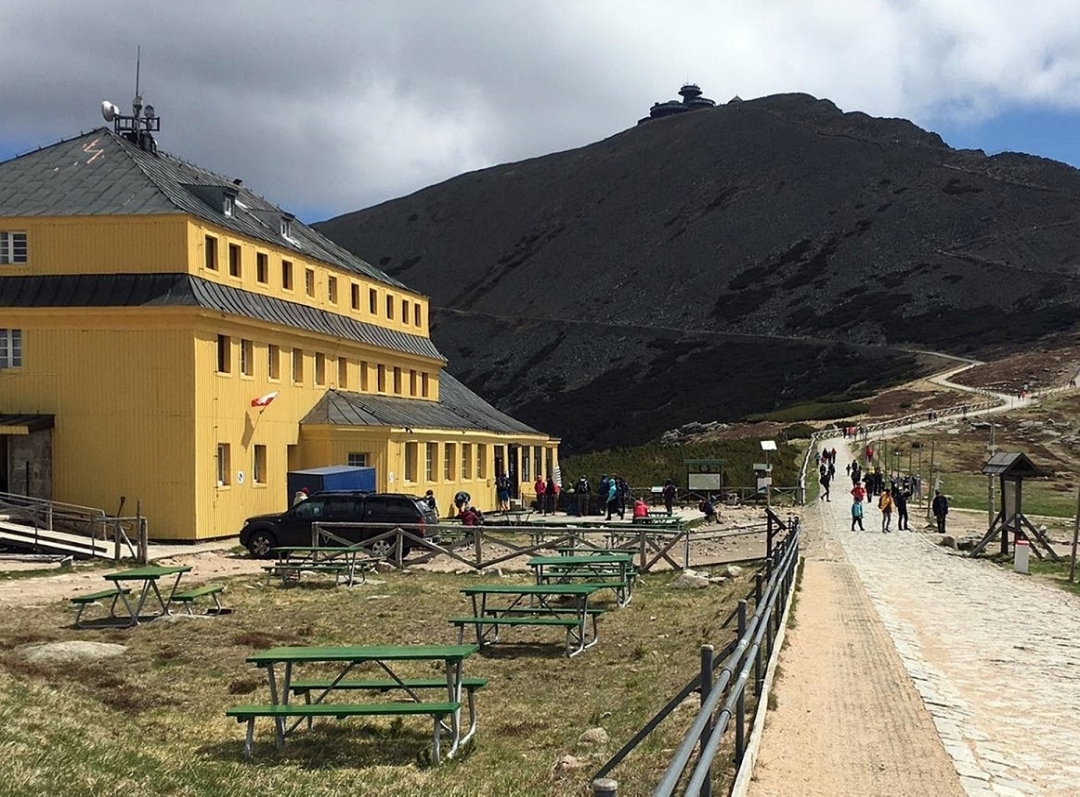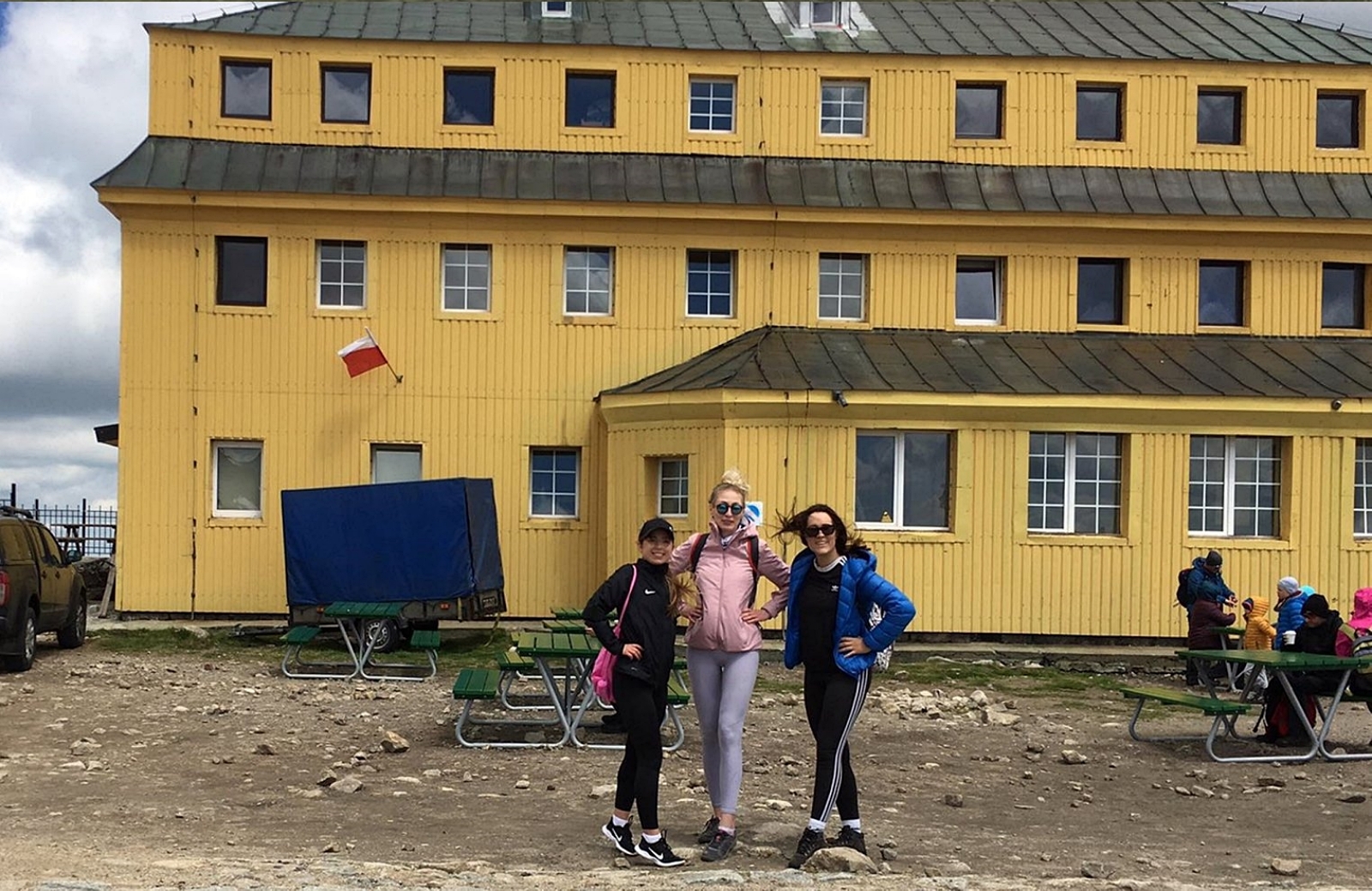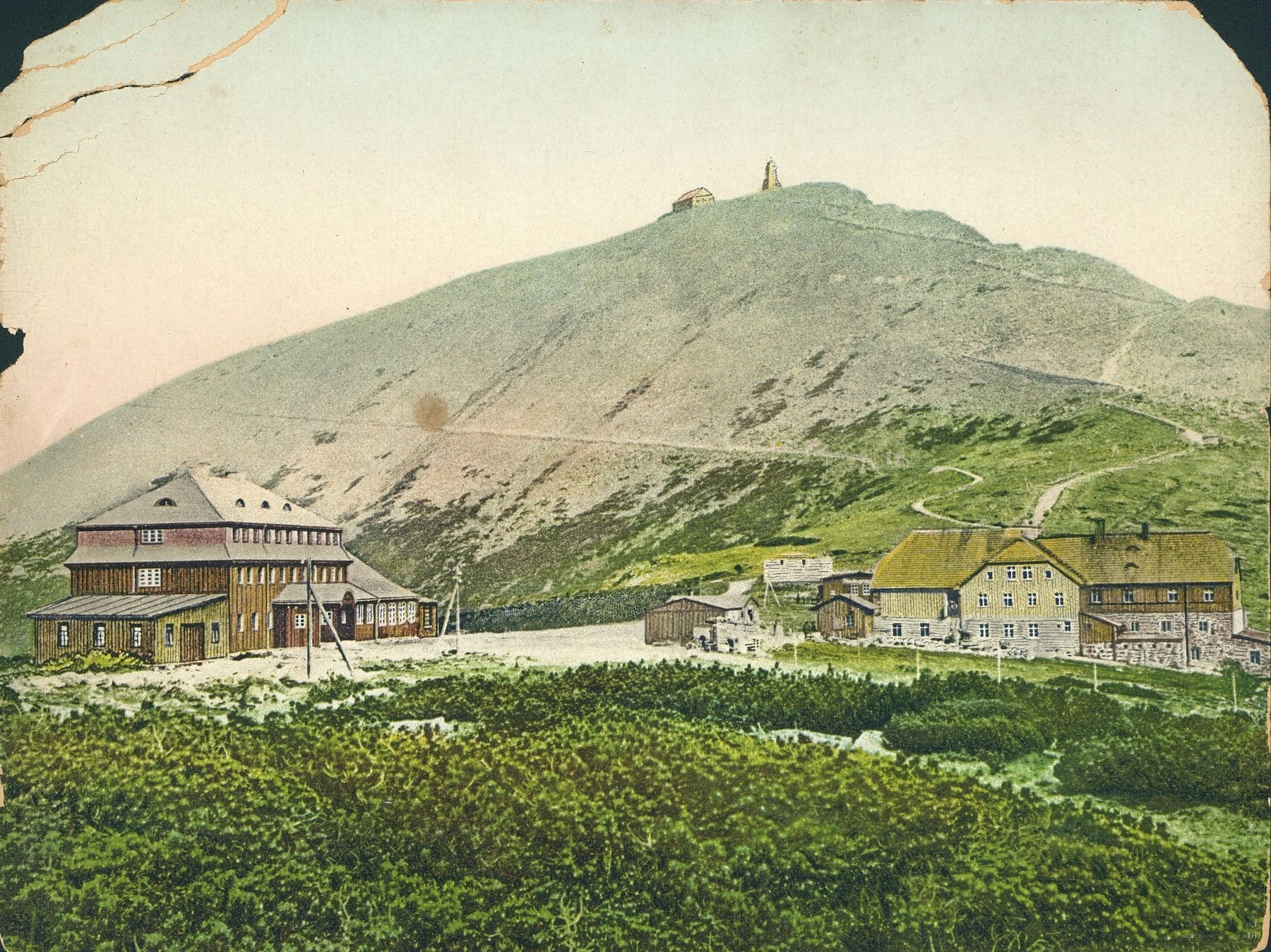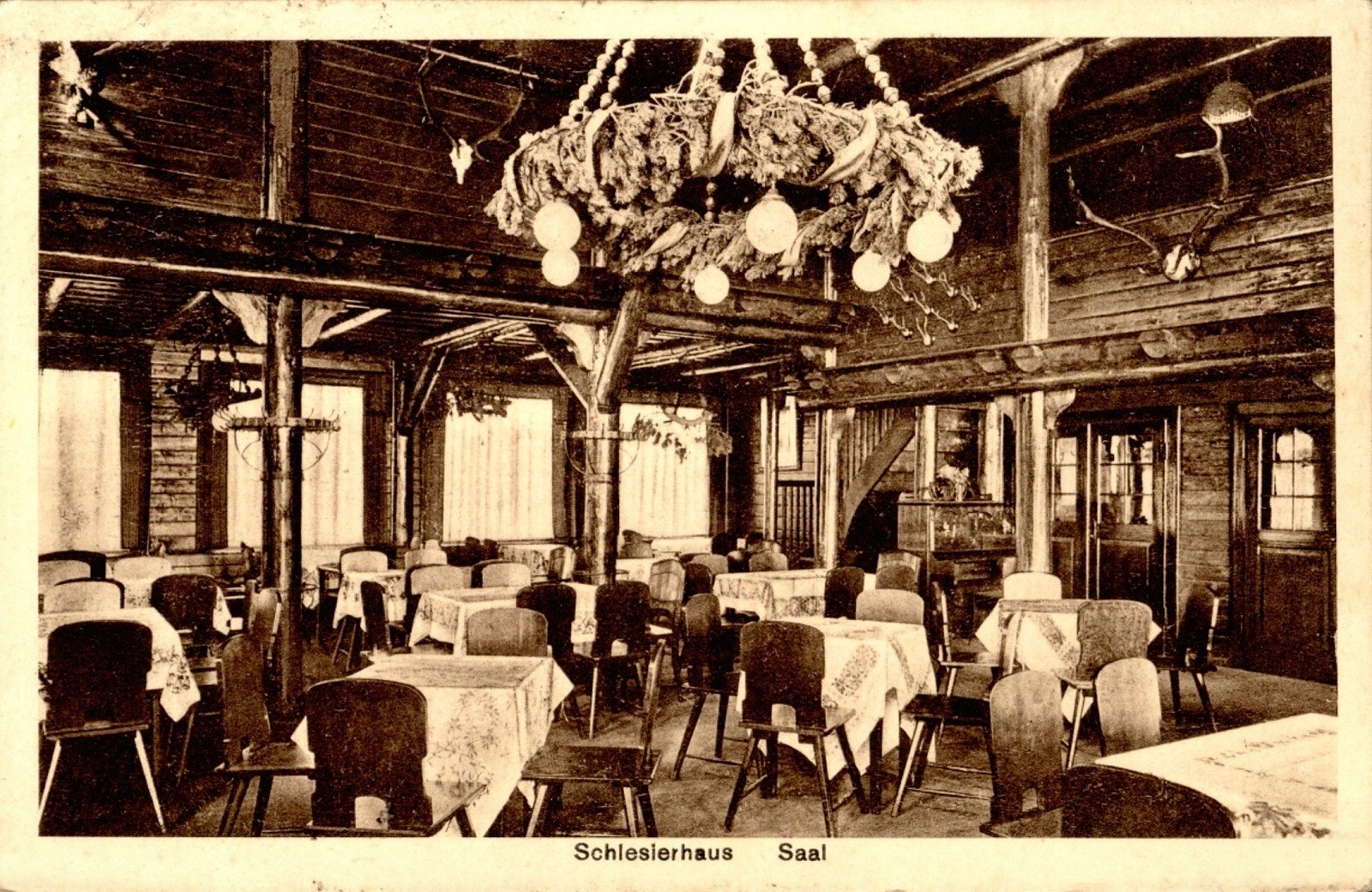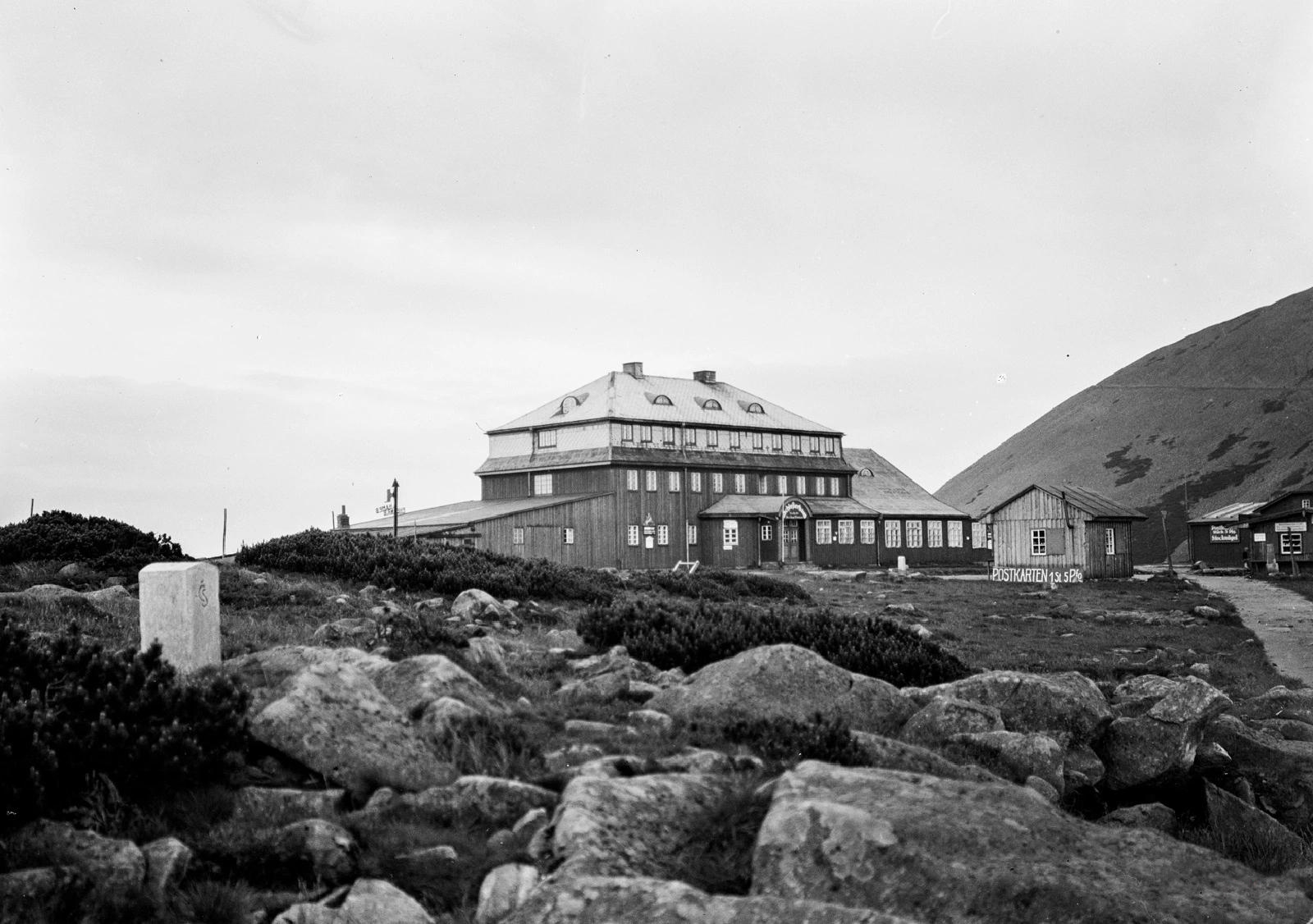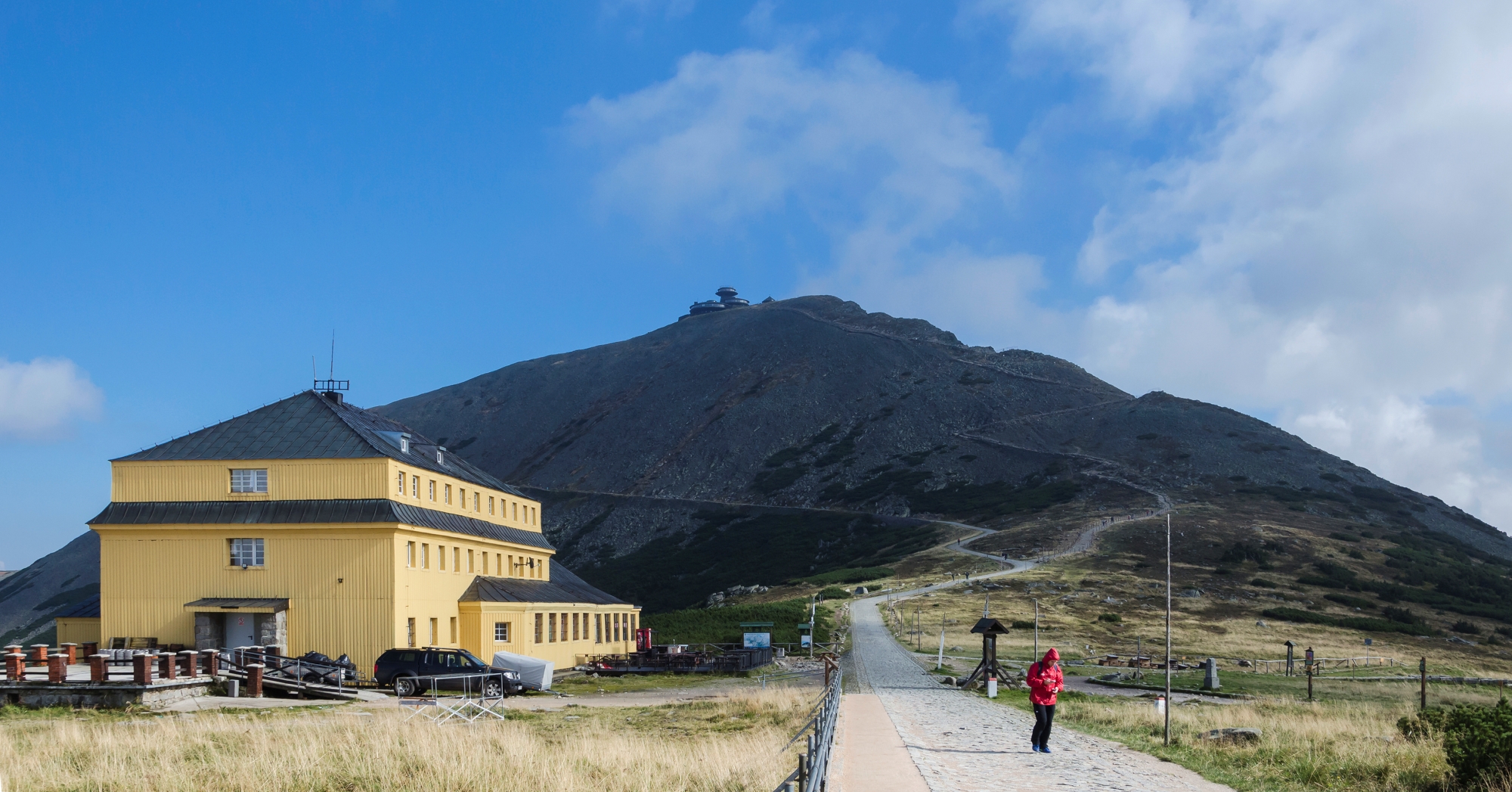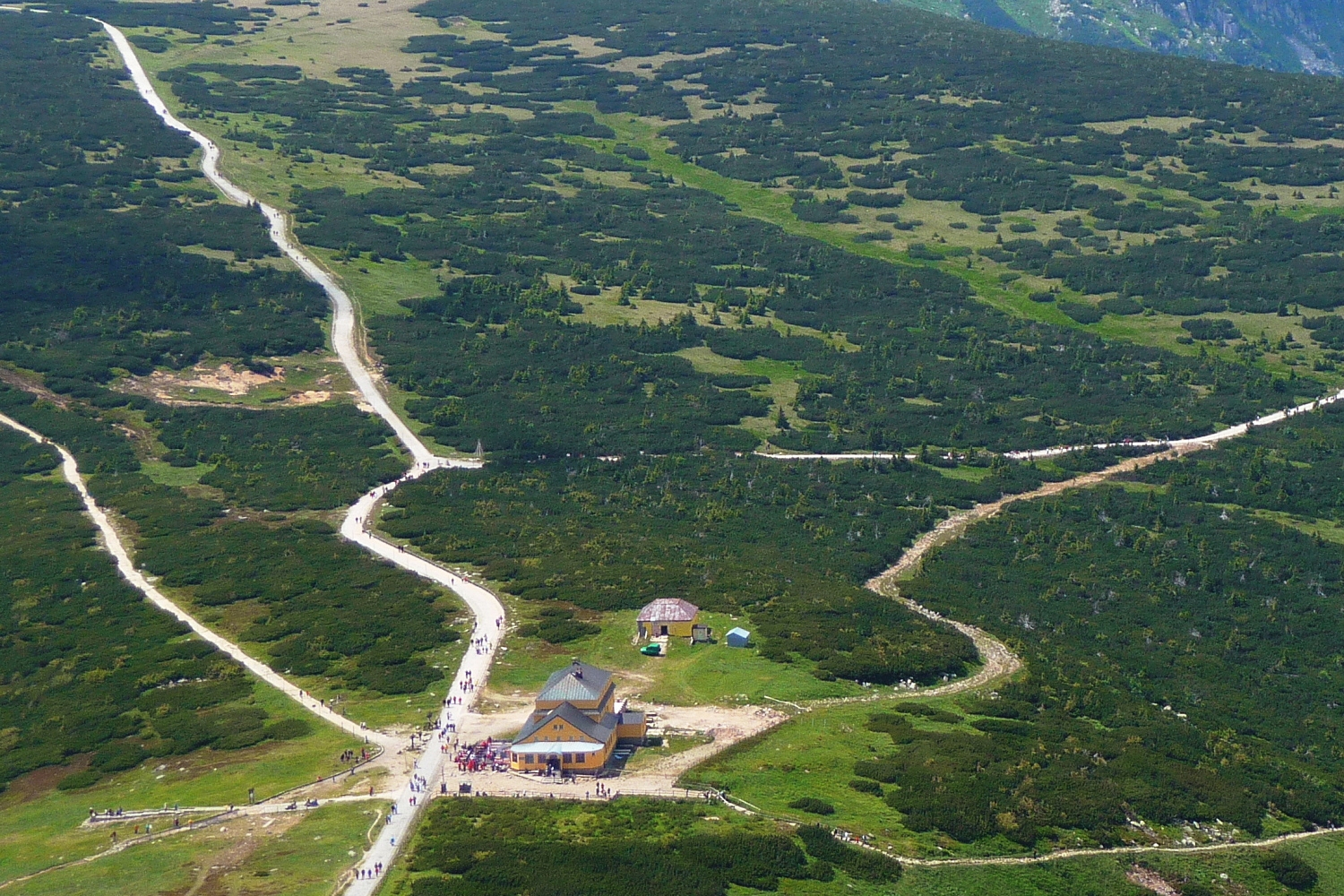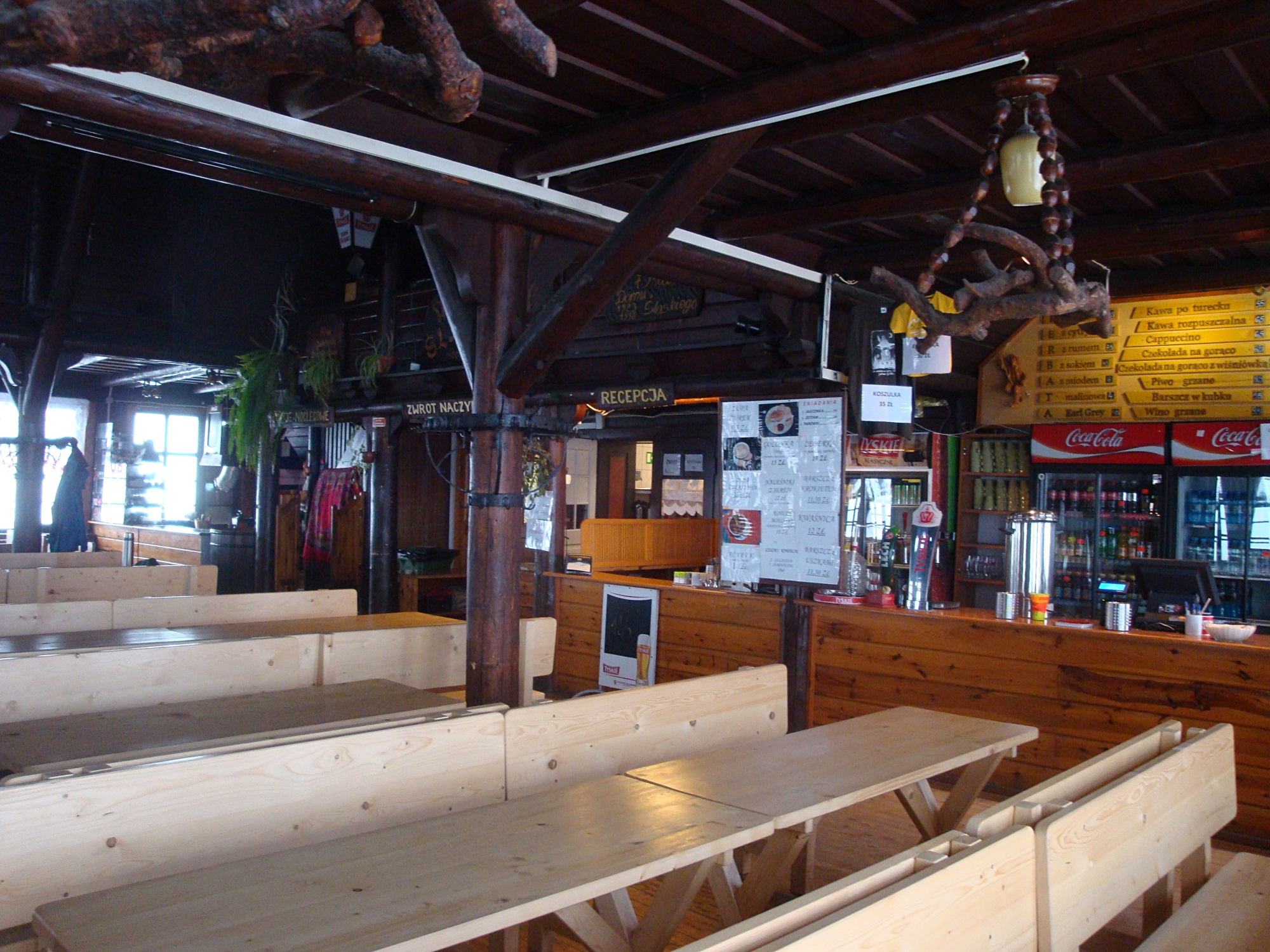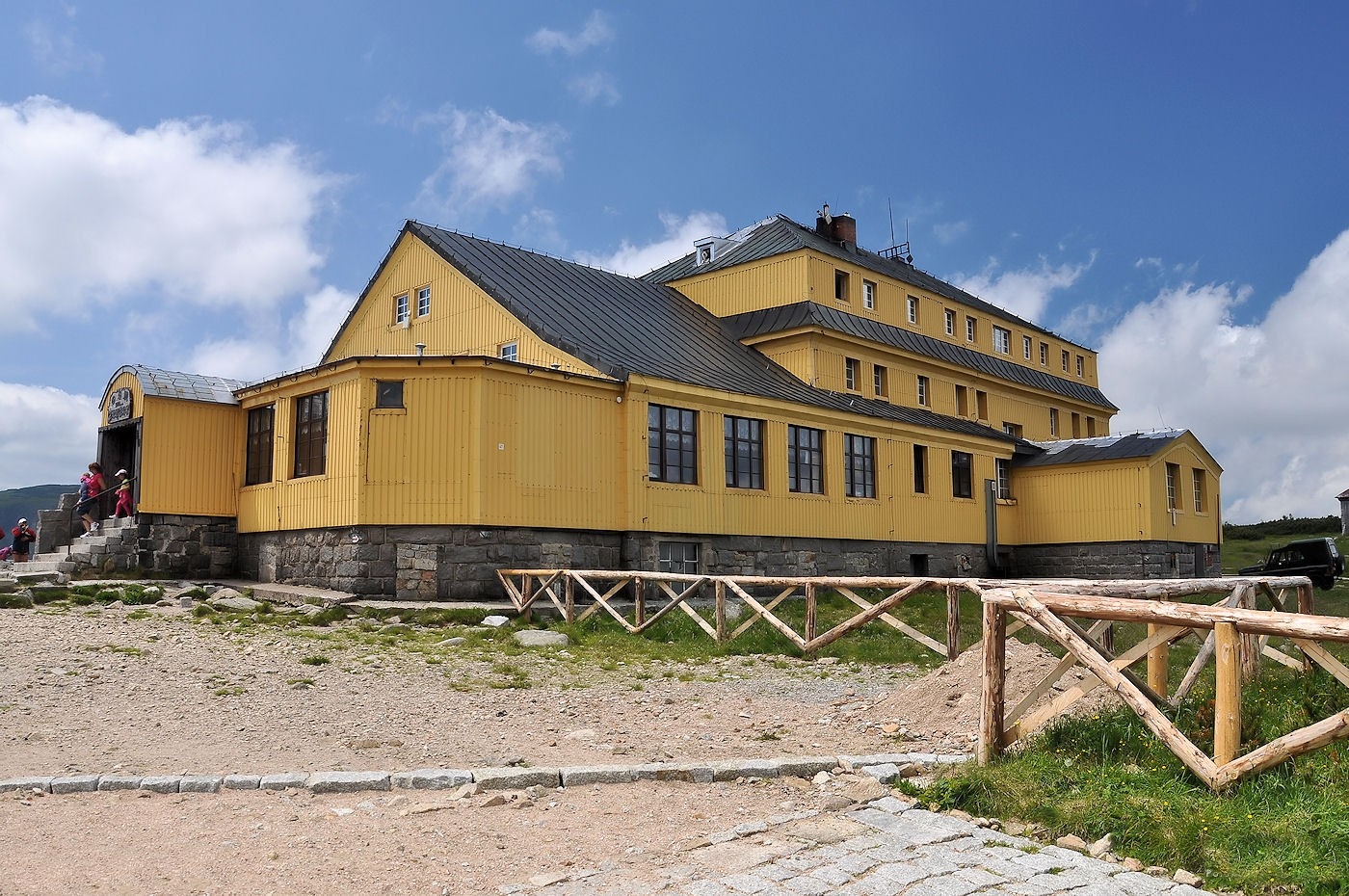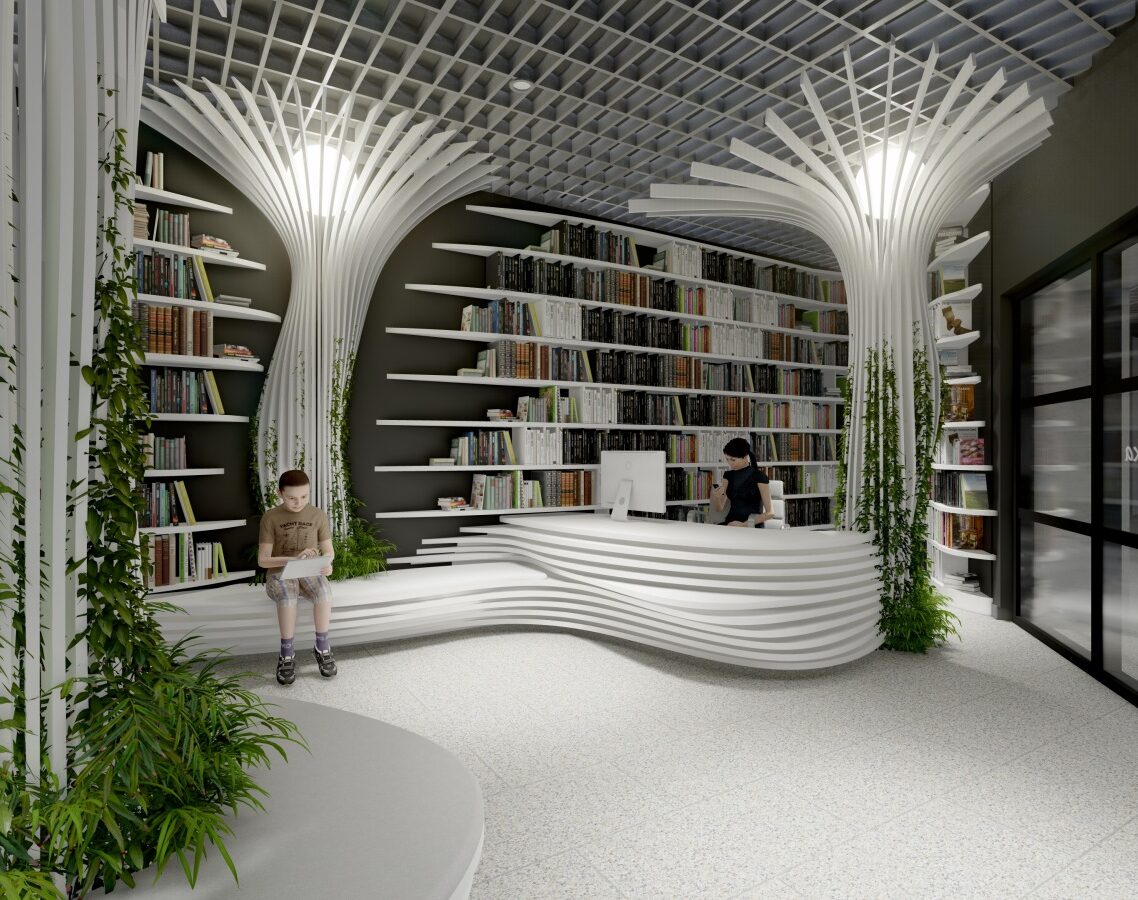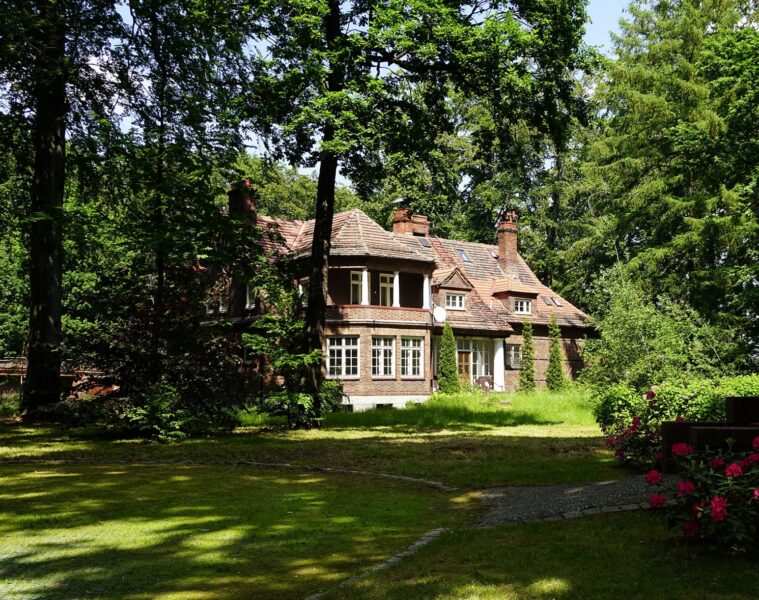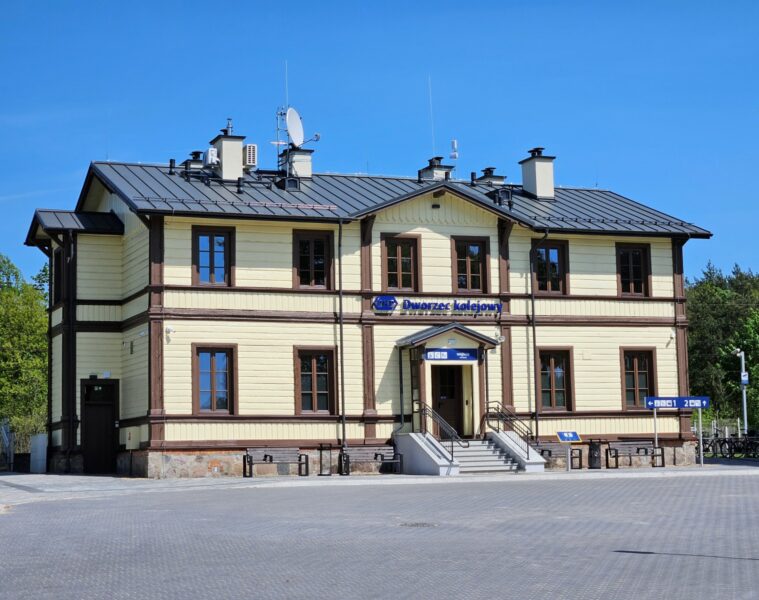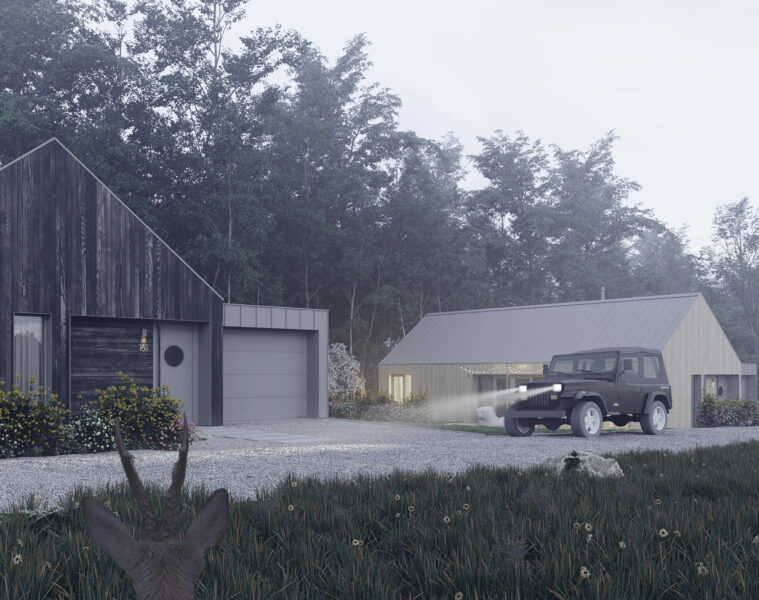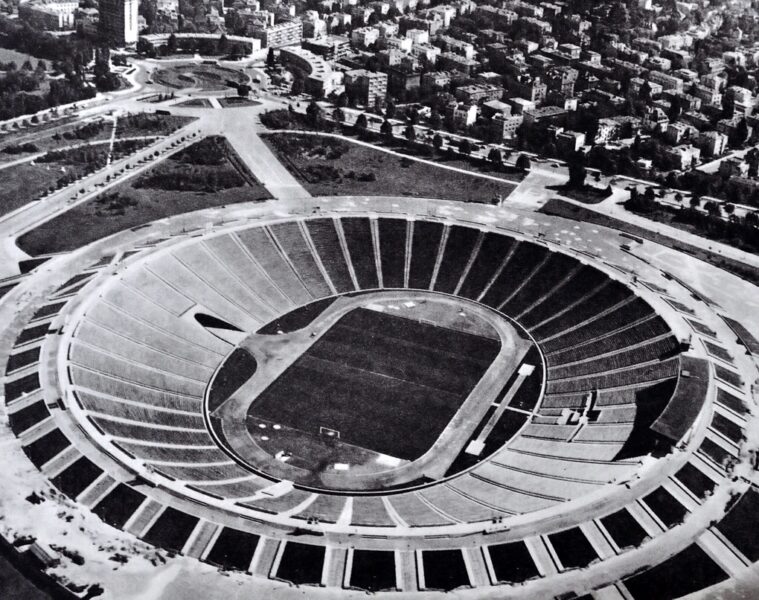The Dom Śląski (Silesian House) chalet (German: Schlesierhaus) is one of the most beautifully situated places in the Krkonoše Mountains, located at the foot of Sněžka at an altitude of 1,400 metres above sea level on the very Czech-Polish border, at the junction of the main tourist routes. It was built in 1921-22, in a style characteristic of inter-war German chalets.
In the 17th century, a shelter for woodcutters and shepherds was built on the mountain pass below Sněžka. In 1847 the first chalet was built on the Silesian side. At first it was called Heldmannbaude – after the owner. It burnt down in 1888, and a new one was built in 1904.
The Silesian House hostel today. Photographer: Arkadiusz K. (Arro)/fotopolska.eu, Licence: CC-BY-SA 3.0
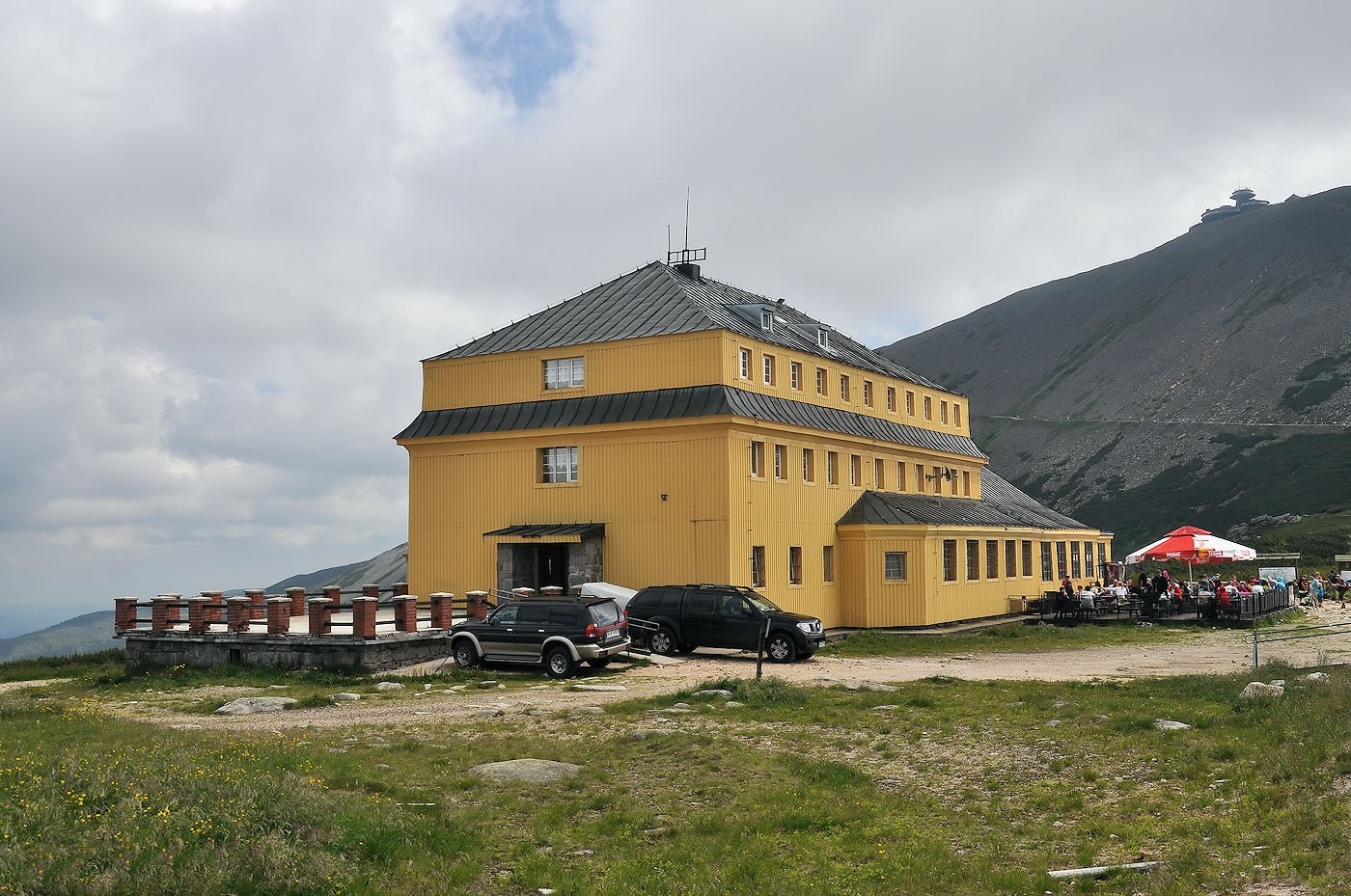
The current building is the third on this site. Built between 1921 and 1922, it was designed by the Wrocław architect Herbert Eras. From the outside, it represents the form characteristic of German Sudetenland chalets of the inter-war period – the stepped or pyramidal shape of the roof, the ground floor and ground floor boarded, and the roof itself and the attic covered with tiles of eternit. On the ground floor there was a kitchen, a buffet, an entrance hall, an alpine-style dining room and utility rooms. The interior was kept in warm red and yellow tones. The first floor and the attic had accommodation with sanitary facilities.
Silesian House in 1920 and 2020. Source: Lower Silesian Digital Library and Scars of Poznań
In 1923, a glazed veranda was added and the kitchen facilities were rebuilt. At the time, the hostel accommodated 66 people in single, double and triple rooms and about 60 in the communal hall. A wind turbine was installed next to the chalet in September 1924 on the initiative of the owner Hugo Teichmann. However, it only operated until January 1925, when the upper part was destroyed due to excessive snow and hoarfrost.
Tourists in front of the Schlesierhaus/Silesian House below Sněžka in 1930 and 2020. Source: Silesian Digital Library and Scars of Poznań
After World War II, the hostel was managed by DTTK and PTT, and from 1951 by PTTK. From November 1950, the hostel housed the WOP guardhouse, and later the Border Guard. The hostel was called Pod Śnieżką, Na Równi pod Śnieżką and Dom Śląski. Over the years, the building underwent renovation, during which it was clad in yellow cladding and the roof was covered with sheet metal. Windows with ahistoric divisions were also inserted. These ill-considered measures meant that the post-German chalet lost all its character. There is no trace of the former charming building, which fit in with the mountain surroundings. In 1982, the Czech Obří bouda chalet opposite was demolished. Since July 2005, when the Border Guard released the building belonging to the District Office in Jelenia Góra, the Silesian House has been used exclusively by tourists. The building has been private property since 2007.
Source: domslaski.pl
Read also: Architecture in Poland | History | Wood | Interesting facts | Travel

